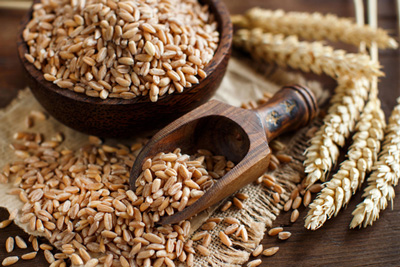The untapped demand for ancient wheat
- Like
- Digg
- Del
- Tumblr
- VKontakte
- Buffer
- Love This
- Odnoklassniki
- Meneame
- Blogger
- Amazon
- Yahoo Mail
- Gmail
- AOL
- Newsvine
- HackerNews
- Evernote
- MySpace
- Mail.ru
- Viadeo
- Line
- Comments
- Yummly
- SMS
- Viber
- Telegram
- Subscribe
- Skype
- Facebook Messenger
- Kakao
- LiveJournal
- Yammer
- Edgar
- Fintel
- Mix
- Instapaper
- Copy Link
Posted: 27 June 2016 | Victoria White, Digital Content Producer | No comments yet
Researchers have argued that the consumer demand for high-quality, healthy food specialties presents an opportunity to reintroduce ancient wheat varieties…


Two plant breeders have argued that the consumer demand for high-quality, healthy food specialties presents an opportunity to reintroduce ancient wheat varieties.


Friedrich Longin and Tobias Würschum, both at the University of Hohenheim in Germany, say that consumer preferences in the US and Europe, driven more by a desire for novel products and healthy ingredients than a demand for low prices, create markets that ancient wheat species can fill. They say that by testing and analysing some of the thousands of varieties found in gene banks, which carefully store seeds from the lineages of ancient species, agronomists and cereal scientists can select those best suited to both modern farming needs and consumer preferences.
Gene banks
Multi-grain breads and baked goods containing ingredients such as oats, barley, and millet are widely available, but the wheat flour in them comes almost exclusively from bread wheat. The development of industrial agriculture and the green revolution in the mid-twentieth century focused on developing cultivars that produce a high yield and have short stalks which are less likely to collapse in the field and expose the grains to pests and disease. Other varieties ceased to be commercially viable, and as they fell out of favour, traditional dishes and regional food diversity also began to disappear.
Many of these varieties still exist in gene banks all over the world, and scientists view them as an important source of genetic diversity. Longin and Würschum say a multidisciplinary step-wise but holistic approach that looks at both agronomic properties like disease tolerance and yield potential as well as nutritional and taste profiles is needed to select the best candidates to reintroduce to the market. In their own research, they screened hundreds of varieties of einkorn and emmer and tested the 15 best candidates at four different locations in Germany. The results showed the importance of looking at these plants holistically.
The reintroduction of spelt
Longin and Würschum also point to the sizable and growing market for spelt products as an example of how ancient grains can be successfully reintroduced in modern markets. Spelt, the main cereal crop in Southern Germany, Austria, and Switzerland until the early 20th century, nearly disappeared. By the 1970s, when its rediscovery started, only a few millers and bakers were still familiar with traditional spelt recipes such as Swabian seelen, a baguette-like pastry. Today, more than 100,000 hectares of spelt are grown annually in and around Germany, with an annual turnover of €1 billion across Europe and an annual growth rate of more than 5%.
Longin and Würschum say that to successfully reintroduce other ancient grain varieties, interdisciplinary cooperation all along the supply chain, from plant breeding to nutritional analysis to marketing, is needed, but they believe the end results can create a self-financing strategy for providing high-quality foods and preserving ancient species.








